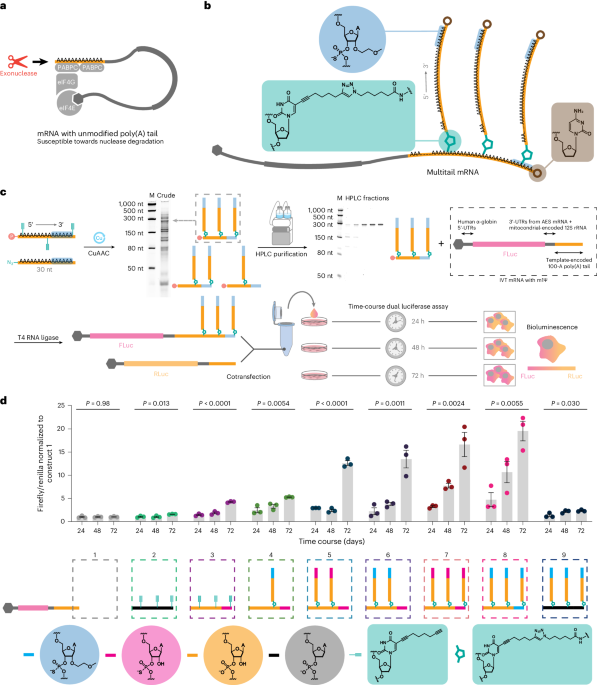[ad_1]
‘He’s starting to aim for oncoming traffic, now,’ one officer said

Article content
Soon after Saskatchewan RCMP had eyes on the man responsible for the James Smith Cree Nation mass stabbing, officers in pursuit had permission to take his vehicle down — even knowing the risk behind such a move.
The coroner’s inquest into the death of Myles Sanderson began Monday with jury selection, a preview of what the week ahead was to bring, and details into the moments of Sanderson’s arrest.
Advertisement 2
Article content
Article content
Sanderson, 32, killed 11 people and injured 17 others during a stabbing rampage on James Smith Cree Nation and in the nearby community of Weldon on the morning of September 4, 2022.
Sanderson died in police custody a few days later, after an extensive multi-province manhunt.
The inquest into the deaths of Sanderson’s victims took place three weeks ago in Melfort, and resulted in a staggering 29 recommendations from that coroner and jury. This second inquest will focus entirely on the death of Myles Sanderson.
Under the provincial coroner’s act, an inquest is required any time a person dies in police custody, unless the coroner is satisfied that the death was due entirely to natural causes and was not preventable.
On Monday morning, presiding coroner Robert Kennedy began by swearing in a panel of six jurors, who will hear evidence, ask questions and make recommendations about what could be done to prevent similar deaths in the future. The inquest is expected to run until Friday, and will hear from approximately 13 witnesses. including RCMP officers, pathologists, physicians, paramedics and psychologists.
Advertisement 3
Article content
The inquest began with the RCMP’s arrest and capture of Myles Sanderson, starting with a phone call to the Wakaw RCMP on the afternoon of Sept. 7, 2022.
‘She’s alleging that it’s Myles Sanderson’
That afternoon, a woman living near Wakaw said Myles Sanderson broke into her home, smashed a window and took her vehicle.
“In this case, the sergeant that was actually working that day at the detachment picked up the phone and spoke directly to the person who was reporting that crime,” said RCMP Supt. Devin Pugh, who was a critical incident commander during the manhunt for Myles Sanderson and testified before the coroner’s inquest on Monday.
On his way to respond to the break-in, the sergeant called RCMP dispatch to explain what he had heard.
“She’s really panicked,” the sergeant told dispatch, as sirens wailed in the background. “She says the guy broke in and took her vehicle, and she’s alleging that it’s Myles Sanderson.”
When RCMP was able to get in touch with the woman directly, she confirmed what she had seen.
“He’s gone with my white Avalanche, towards Wakaw,” she said.
Just over an hour later, Myles Sanderson would be in RCMP custody.
Article content
Advertisement 4
Article content
High risk, intense response
Once the RCMP knew which vehicle they were chasing and what direction Myles Sanderson was travelling, a flurry of radio calls took place between dispatch, officers and Pugh as the critical incident commander.
They were calculating how far Sanderson could drive on a full tank of gas, setting up roadblocks, raising concerns about the safety implications of a potential high-speed chase during school pick-up hour and asking if Sask. Highways could shut down their ferries to restrict river crossings to the bridges.
At that time, over 100 officers were working together to find and arrest Myles Sanderson.
“The risk level for not apprehending this individual was probably the highest I’ve ever seen in my career,” Pugh said. “I would say the response and the number of officers was justified in the attempt to locate this individual as quickly as possible.”
After leaving Wakaw, Myles Sanderson drove to the One Arrow First Nation and went to speak with Richard Sanderson, offering him $250 for a ride to Saskatoon.
Richard declined, telling Myles he didn’t have a working vehicle, and Richard called the RCMP minutes before 3 p.m.
Advertisement 5
Article content
“I am phoning about the killer here,” he told the dispatcher. “He’s in One Arrow First Nation. He just came from my yard and he sat on my deck. I ain’t lying, that’s him. I know him.”
Standing on his deck, Richard Sanderson watched where Myles was going and what he was doing, and was reporting his movements to RCMP.
“He’s leaving towards the backroad, towards the old village,” Richard Sanderson told the dispatcher. “You guys better hurry up.”
‘Stay with that vehicle’
In the 20 minutes before Myles Sanderson was arrested, the RCMP converged on his position.
“All available RCMP resources immediately responded to the area,” said Pugh, as officers and incident command continued to exchange radio calls.
RCMP Const. Brianne Hathaway was driving an unmarked police Jeep at the time, and reported that she was right behind him.
“Stay with him,” Pugh told her over the radio. “Stay with that vehicle. This is incident command. Stay with that vehicle.”
At the time, officers were told to keep their lights and sirens off, so Sanderson would not know the RCMP was on his trail.
When Sanderson realized police were closing in, he turned into a service station, then went through the ditch and sped into oncoming traffic on Highway 11.
Advertisement 6
Article content
“He knows we’re onto him,” an officer said. “Members are in pursuit, lights on.”
As Pugh sat in the RCMP mobile command centre that had been set up on James Smith Cree Nation, he had to make a critical decision. Regular RCMP detachment officers aren’t trained to ram vehicles at high speeds — but that might be the best way to get Myles Sanderson off the road before anybody else got hurt, they knew.
“The risk of intentionally ramming a suspect’s vehicle with a police vehicle at high speeds is very high-risk,” Pugh told the inquest. “The known risk of asking police officers to conduct this action was the real possibility of causing a serious collision, which could injure or kill the police officers involved, or the suspect. (But) we run into danger, to ensure that the threat is stopped.”
To make the decision, Pugh told the inquest, he considered the following factors: he had credible information that Myles Sanderson was the driver; he knew Sanderson was responsible for multiple homicides and attempted homicides; Sanderson was armed with a knife, and had previously used a vehicle as a weapon; Sanderson was driving a stolen vehicle extremely dangerously, causing significant risk to others on the road; and based on his direction of travel, Sanderson was heading towards Saskatoon, a highly-populated area.
Advertisement 7
Article content
At 3:15 p.m., Pugh gave the order: “Take the vehicle down if the opportunity exists to end the threat.”
‘I got him. I got him.’
Myles Sanderson continued to drive south in the northbound lane, as drivers scattered off into the ditch to avoid him.
“He’s starting to aim for oncoming traffic, now,” one officer said.
When she saw an opportunity, RCMP Const. Nancy Darling sped up to hit Sanderson’s’ vehicle, but he was able to keep driving. Then, Myles Sanderson crossed the median and went into the southbound lanes — still driving well above the speed limit, but in the same direction as the highway traffic.
For the officers giving chase, Pugh said, that was “a gamechanger.”
In the southbound lanes, Const. Heidi Marshall caught up with the Avalanche, the flashing lights from her vehicle reflected in the back bumper seconds before contact. As Sanderson’s vehicle spun out into the ditch, a very surprised-sounding Marshall spoke over the radio.
“Um, I got him. I got him,” she said.
Later, when Pugh watched the footage from Marshall’s vehicle, he was amazed.
“I asked our officers to do something that they are not trained or exposed to, and it was a very, very high-risk situation that we asked them to conduct,” he said. “(And) I think, if you look at the textbook vehicle immobilization technique, I think you would say that it was textbook — other than the speeds involved. Incredible.”
Advertisement 8
Article content
Using their vehicles as rolling cover, RCMP officers approached the Avalanche. Officers observed that Sanderson’s hands were up, and the Avalanche’s airbags had been deployed.
An officer opened the door, and shouted at Sanderson to “get on the ground,” “get out of the vehicle now,” “you’re under arrest,” and repeatedly ordered Sanderson to “show us your hands” and “stop resisting.”
Officers pulled him out of the car, and either pulled Sanderson to the ground or followed as he fell. Three officers held him down and restrained him.
“Myles,” an officer said. “Myles, you’re under arrest.”
Minutes later, at 3:33, Myles Sanderson went into medical distress — one of the RCMP officers on-site, also a former EMT, realized what was happening and started medical intervention two minutes later. Sanderson was taken by ambulance to Royal University Hospital in Saskatoon, where he died later that day.
‘A clever way of not facing our people’
During a break from inquest testimony, James Smith Cree Nation Chief Wally Burns said the footage and recordings from RCMP as they chased Myles Sanderson down the highway, rammed the stolen vehicle off the road and arrested him “hurt” to see. Many community members were crying.
Advertisement 9
Article content
“It was a clever way of not facing our people,” Burns said of Sanderson’s actions that day. “A cowardly way.”
Burns was horrified to see the dozens of vehicles in the ditch that had swerved out of Myles’ way, and how close he had come to taking more lives that day.
“I had a couple friends on that highway,” Burns said. “I feel for those people; I think it was traumatizing.”
The inquest into the death of Myles Sanderson will continue Tuesday morning.
Recommended from Editorial
The Saskatoon StarPhoenix has created an Afternoon Headlines newsletter that can be delivered daily to your inbox so you are up to date with the most vital news of the day. Click here to subscribe.
With some online platforms blocking access to the journalism upon which you depend, our website is your destination for up-to-the-minute news, so make sure to bookmark TheStarPhoenix.com and sign up for our newsletters so we can keep you informed. Click here to subscribe.
Article content
Maqvi News #Maqvi #Maqvinews #Maqvi_news #Maqvi#News #info@maqvi.com
[ad_2]
Source link


















































